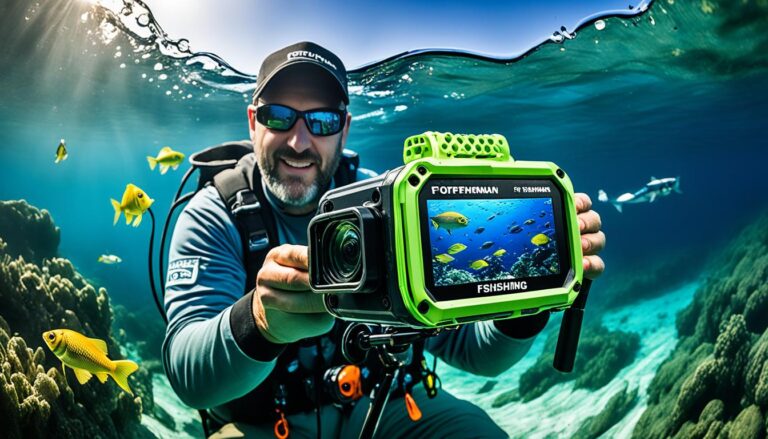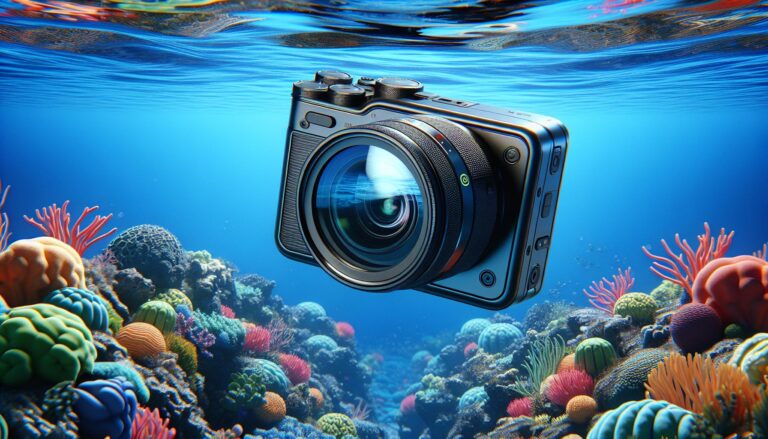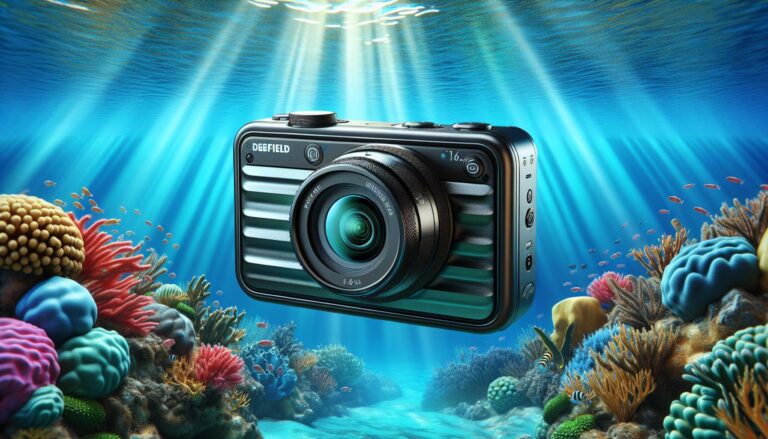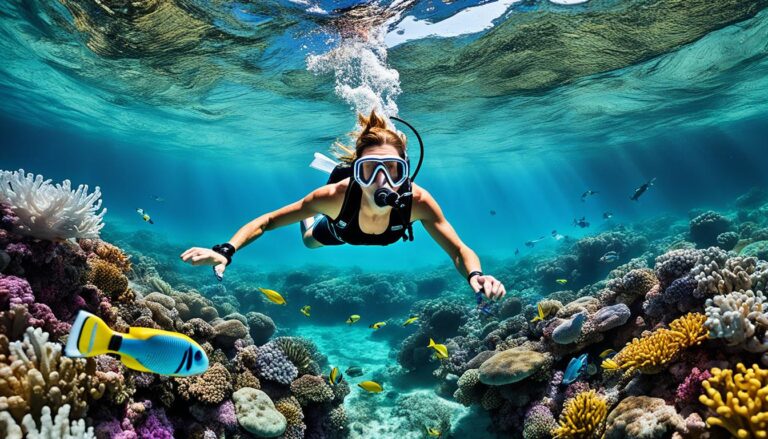Mastering Underwater Photography: A Guide to the Best Cameras for Scuba Diving
Diving into the deep blue sea is an awe-inspiring experience, isn’t it? Yet, no matter how vividly we describe our underwater adventures, words often fall short. That’s where underwater cameras come in, serving as our eyes beneath the waves and helping us capture the mesmerizing world that lies beneath the water’s surface.
As an avid scuba diver, I’ve discovered that the right underwater camera can make all the difference. It’s not just about recording memories, but about sharing the beauty and mystery of the aquatic world with others. This article will delve into the realm of underwater cameras for scuba diving, guiding you through the process of choosing the perfect device for your underwater exploration.
What is an Underwater Camera for Scuba Diving?
An underwater camera for scuba diving is a specialized equipment enabling the capturing of high-quality photographs and videos in marine environments. Churchly crafted for marine adventures, this device has evolved significantly, now offering scuba divers easy-to-use interfaces, top-notch image resolutions, and the ability to descend deeper into the ocean’s depths.
Understanding the Basics
Getting the grasp of an underwater camera for scuba diving is the first step in enhancing your marine photography skillset. These cameras are scientifically designed, incorporating water-tight casings and robust lenses to stand the high pressure in the deep sea. Their compositions are fundamentally different from standard cameras, containing specialized gaskets or seals, effectively preventing any water leakages that can damage the intricate electrical components.
Key Features to Look For
When diving into the market for an underwater camera, the fundamental features to look for vary based on the level of your scuba diving expertise and the desired outcome of your photos or videos. These can include factors like depth rating, indicating the maximum depth the camera can endure, a crucial metric for deep-sea divers. Image resolution, both for still photos and videos, central for high-quality output. It’s also important to examine the battery life, essential for extended diving excursions. Additionally, the camera’s size and weight could matter, balancing portability with capabilities. Lastly, other features like built-in GPS, Wi-Fi capability for easy sharing, and wide-angle lens options are noteworthy, especially for those keen on capturing extensive marine landscapes.
The Importance of Underwater Cameras in Scuba Diving
Underwater cameras, pivotal in immortalizing your scuba diving experiences, do more than just capture stunning images. They play an essential role in elevating the overall scuba diving experience, while also acting as a tool to preserve marine life and environment.
Enhancing Your Diving Experience
An underwater camera takes my scuba diving experience to another level. More than just a recreational activity, diving with one of these devices allows me to have a memento of my interactions with the aquatic life. These vivid captures, both in photo and video formats, serve as tangible reminders of my underwater explorations, enabling me to share exciting and unique marine experiences with others.
Moreover, these cameras keep getting better by the day. Modern underwater cameras come with high-resolution capabilities and user-friendly interfaces. They’re built to withstand extreme pressures, making them suitable for sea depths. Canvasing the oceanic depths through a wide-angle lens, enjoying long battery life and convenient Wi-Fi transfers, provide me as a diver, with unparalleled convenience and unmatched quality.
Preservation of Marine Life & Environment
Undeniably, the conversation about scuba diving and underwater photography goes beyond personal enjoyment. It’s also about marine conservation. Every photograph taken underwater holds the potential to inspire respect for our oceans and their inhabitants.
In my dives, I’ve used my underwater camera to document changes in the marine environment. It helps raise awareness about the plight of the oceans, from coral bleaching to plastic pollution. This evidence gives viewers a stark visual representation of the state of our marine ecosystem. The images can influence policy and advocate for stronger conservation efforts.
The role of the scuba diver, armed with an underwater camera, thereby transcends that of an observer. We become documentarians, educators, and advocates for preserving the mesmerizing yet fragile underwater world. Thus, the importance of underwater cameras in scuba diving is not just to capture the experience but also to protect the marine environment.
Top Underwater Cameras for Scuba Diving in 2021
Carrying forward the analysis of underwater cameras for diving, let’s explore the top picks of compact and DSLR/mirrorless underwater cameras for 2021.
Compact Underwater Cameras
A perfect fit for recreational divers, compact underwater cameras combine portability with high performance. The Olympus Tough TG-6 and Canon PowerShot G7 are notable examples.
Olympus Tough TG-6: This compact camera remains a top choice for divers in 2021, given its robust build, the ability to operate down to depths of 50 feet without a housing, and its easy-to-use controls.
Canon Powershot G7 X Mark III: Recognized for its quality image and video abilities, this compact powerhouse offers a light and easy-to-use casing, a 20.1 Megapixel 1.0-inch stacked CMOS sensor, and a DIGIC 8 image processor making it a standout in this category.
DSLR and Mirrorless Underwater Cameras
For diving enthusiasts seeking professional-quality shots and videos, DSLR and mirrorless underwater cameras stand as the best equipment. The Nikon Z7 and Olympus E-M1 Mark III have gained substantial attention.
Nikon Z7: In the DSLR category, Nikon’s Z7 continues to set the bar high. It provides high resolution, combined with the brand’s extensive lens range, making wide-angle shots or macro photographs easier.
Olympus E-M1 Mark III: In the mirrorless category, the Olympus E-M1 Mark III reigns supreme, known for its weather-sealed body, high-speed auto-focus, and the capability to deliver exceptional image quality even in low light conditions.
Each of these cameras, either compact or DSLR/mirrorless, are recognized for their sector-leading capabilities and represent prime choices for divers looking to capture the breathtaking beauty of underwater environments in 2021.
How to Choose the Right Underwater Camera for Your Scuba Diving Needs
Before purchasing your camera, understand that the best option heavily depends on your diving objectives and budget. Let’s break these down in the following subsections.
Assessing Your Scuba Diving Needs and Goals
In choosing an underwater camera, it’s crucial to understand your diving needs and goals. Are you interested in capturing vibrant, wide-angle shots of coral reefs, or are you eager for macro shots highlighting minute underwater details? For instance, the Olympus E-M1 Mark III is known for its advanced focusing system, beneficial for macro photography. Meanwhile, for those diving deep seeking wider landscape shots, the Nikon Z7, praised for its high-resolution sensor, could be your pick.
Considering Your Budget and Skill Level
Another important consideration is your budget and skill level. Compact cameras like the Canon PowerShot G7 X Mark III and Olympus Tough TG-6, known for their ease of use and affordability, are perfect for beginners. Their high performance yet compact structure means less hassle and more focus on exploring the underwater world. Meanwhile, more experienced divers might opt for DSLR and mirrorless options such as the Olympus E-M1 Mark III or Nikon Z7. Despite their high price point, their superior features and flexibility make them worth the investment for professional-quality shots. Knowing your budget and skill level narrows down the options, making your choice a tailored fit.
Practical Tips for Using Underwater Cameras in Scuba Diving
Navigating the use of underwater cameras during scuba diving entails upkeep measures and the application of basic photography principles. These pointers can help divers generate top-quality images irrespective of their level of experience.
Maintenance and Handling Tips
Underwater camera care and management are critical points in achieving remarkable results. Overlooking this aspect may shorten the camera lifespan and hamper image quality. Firstly, proper sealing avoids water invasion and damages. So, ensure to inspect and test the O-rings regularly before diving. An example includes the Olympus E-M1 Mark III that comes with a high-quality O-ring for sealing purposes.
Secondly, thoroughly rinse the camera in warm fresh water after diving. Sounds simple, but salts and sediments might damage mechanical parts over time. Lastly, proper storage extends the camera’s lifespan. Divers are recommended to store them in protective cases or bags when not in use, away from extreme temperatures.
Photography Tips for First-Time Users
For novice users, skipping the jargons and diving straight into handy tips can be a relief. First, getting close to the subject improves the image quality. It reduces the water amount between the camera and the subject, resulting in clearer pictures. Camera models, like the Canon PowerShot G7 X Mark III permit closer subject proximity without compromising the image quality.
Second, divers should learn to control their buoyancy. Stable shots require skillful control over your own movements underwater. Lastly, make use of natural lights whenever possible. Especially during sunlit days, natural lighting gives your photos a vibrant, colorful tone. However, for situations requiring artificial lighting, more experienced divers could consider DSLR or mirrorless cameras offering advanced light control features. For example, the Nikon Z7 is known for its superb low-light performance.
User Reviews and Testimonials
Insights from scuba divers of various experience levels offer valuable advice. These testimonials cover two main areas: novice divers’ experiences and professional divers’ recommendations.
Experiences of Novice Divers
Many beginner divers have found underwater cameras to be their new best friend. They’ve expressed excitement about capturing everything from fascinating coral reefs to colorful marine life. Novice divers often start with point and shoot cameras or GoPros, as they’re user-friendly and provide reasonable quality images. For instance, Sony’s Cyber-shot DSC-RX100 and GoPro’s HERO9 Black are frequently praised for their ease of use and impressive results for first-time underwater photographers.
Professional Divers’ Recommendations
Skilled scuba divers, on the other hand, tend to recommend more advanced equipment that can capture stunning details and withstand deep dives. Professionals often gravitate towards DSLR or mirrorless cameras, like the Nikon Z7, for their superior low-light performance and customizable settings. In numerous online forums, professionals have shared that Olympus’s Tough TG-6, with its raw capture, microscope mode, and wide aperture, makes a great compact camera option if weight and space are a concern. However, the ultimate payoff lies in investing time and effort in mastering advanced camera settings to truly capture the underwater vista in all its glory.
Conclusion
So there you have it. Picking the right underwater camera for scuba diving isn’t as daunting as it seems. It’s all about matching your needs and skill level with the right gear. Beginners might find point-and-shoot cameras or GoPros sufficient while advanced divers could benefit from DSLR or mirrorless cameras. Remember, maintaining and handling your camera properly can extend its life and performance. And don’t forget those photography tips – getting close to your subject, controlling buoyancy, and utilizing natural light can make a world of difference in your underwater shots. Ultimately, it’s not just about the camera but mastering the settings and techniques that truly bring out the beauty of the underwater world. Whether you’re a novice or a pro, the underwater world is waiting to be captured. So gear up, dive in, and start snapping away!






